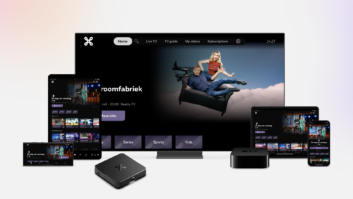
The cost of premium content is ever increasing, and more companies, some with little previous footprint in media, are expanding their services into the TV space. As more and more viewers turn towards mobile screens to watch video and access TV content, OTT might just prove to be a solution for these challenges.
The capability of some online video platforms to manage live, linear and on-demand content over various devices seamlessly enables content owners to develop and plan their content across screens as one complete viewing experience, instead of looking at every delivery method individually. Complex sports events such as the Olympics can be a good example of how content rights owners can maximise the OTT opportunity. The decision as to which sports will be broadcast live on linear channels is no longer as difficult to make as before.
Reuse, repurpose
With the ability to show content on a second and even third screen, the main consideration becomes more a case of establishing which screen will provide the best possible viewer experience and engage with the viewer in the most convenient way. For example, the main linear channel might broadcast team sports for the large TV screen where image resolution and detail are key components of the experience, while sports like athletics or gymnastics might be available only over mobile devices enhanced with relevant data and commentary.
With the support of the OTT platform, it is possible to create temporary channels, for example, focusing on a particular sport and showcasing live games and sports highlights, additional interviews and even flashbacks to previous Olympics. The reuse and repurposing of content creates more and new monetisation opportunities. Content owners can create flexible and dynamic content packages, such as offering subscription-based access to individual sports or live events. Nevertheless, to be able to execute on all of this, media companies need to ensure that their OTT platforms will enable them to publish various forms of content without significantly more effort, and ensure that the content management process is effectively integrated with their product, customer management and billing systems.
Harnessing OTT
Having the content available across all screens may not be enough to guarantee that viewers will tune in or tap in to watch. A new approach is needed to attract attention and bring audiences to the desired screens. With all the content already available in an OTT platform and managed from a single screen, it is now easier than ever before to create clips and teasers that can be immediately shared on social networks or published to YouTube. This functionality can become a powerful tool to make highlights available to a larger or a targeted audience and drive them to the application showing the live events as they are happening. It is an approach that has been used in linear television for many years through the creation of trailers and short form content, but the advantages of OTT are the immediacy and ease with which viewers can access the content live.
However, this puts an extra requirement on media companies: to be able to create content clips as the events unfold and monitor social media activity and viewer preferences and behaviours in real time. While the former depends largely on production and editorial capabilities, the latter can be facilitated to a larger extent by using the data available in the OTT platform. Data which can identify the most viewed content, the average duration of viewing, types of devices used, and even location can prove to be a valuable source of insight in making sure that the highlight clips are relevant for the audience.
The complexity of the technology and implementation of an OTT service might seem daunting, but the many new opportunities it can create for media companies are the biggest incentives for the development of such services, especially when they can be launched in an efficient manner with control over operational risk. With the right amount of creativity and a deep understanding of viewer behaviour, OTT can prove to be a powerful tool to satisfy the growing number of content-hungry mobile-native audiences.
By Stan Dimitrov, product marketing manager, OTT, Ericsson







